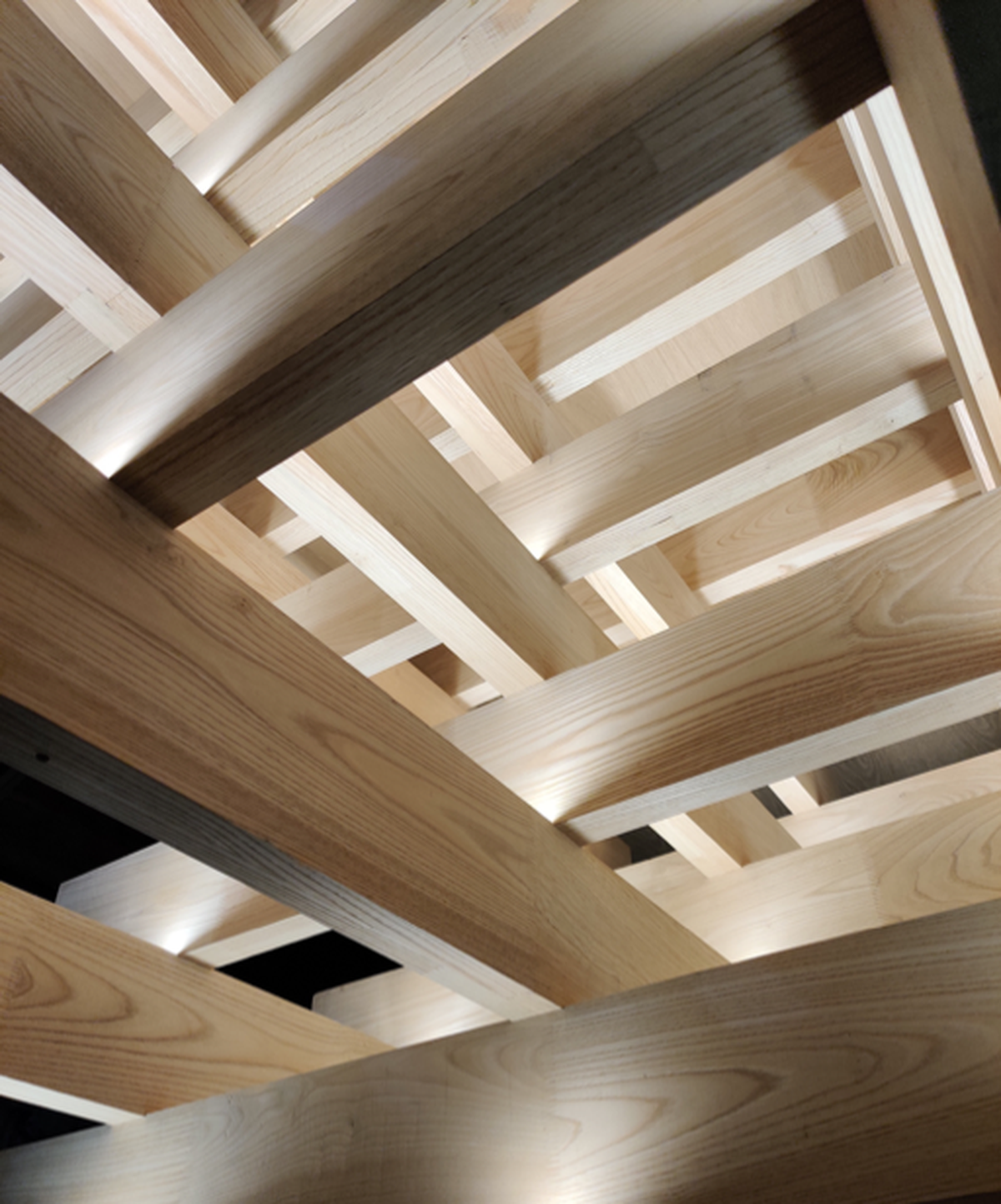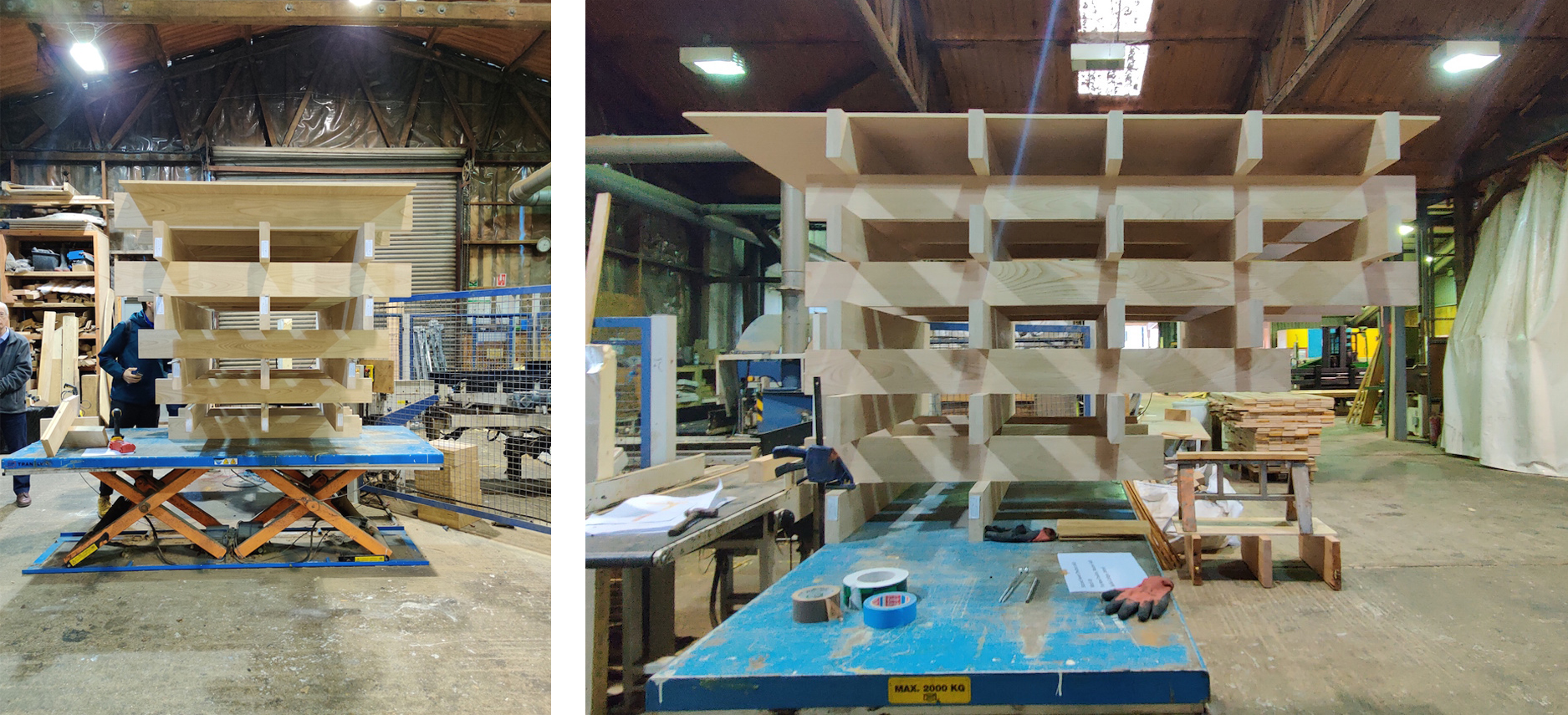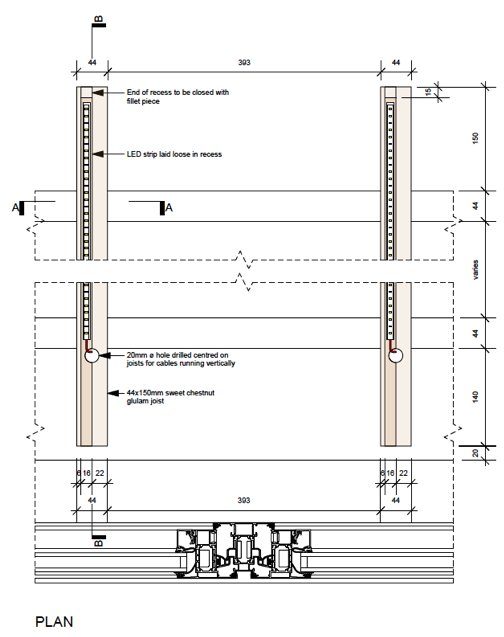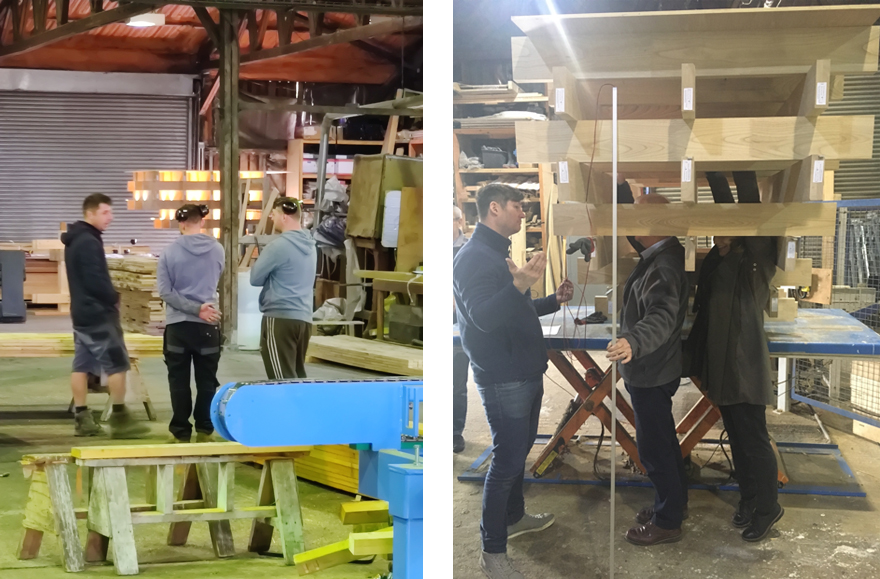BALLIOL COLLEGE, SPORTS PAVILION
NOVEMBER 2019

7:45 AM, London Bridge. The train from Uckfield just entered the station and is spitting out hundreds of commuters, flowing past us. We hop on the now empty train and leave London to visit our timber sub-contractor’s workshop in East Sussex.
We are fast approaching the construction stage of our Sports Pavilion project for Balliol College in Oxford and were invited to review a mock-up of the roof structure. The pavilion roof is formed of slender sweet chestnut glulam joists; 10 layers are stacked on top of each other, each layer cantilevering further into the space, creating a coffer.

1:50 model
From outside the roof structure expresses itself as a lantern, popping up in the centre of the building. The lantern is fully glazed, allowing for rays of sunshine to enter through the stacked glulam. In the evening, the dense timber lattice will be highlighted by a subtle glow, originating from LED strips, that are recessed in the top of the glulam joists.

The mock-up in Inwood’s (timber sub-contractor) workshop


Lighting strategy detail plan and section
The mock-up was used to test the connection details between the individual layers of glulam, the construction sequence, and the integration of the LED strips and the associated wiring. Preceding the assembly of this mock-up, these details have been worked through and coordinated in many lengthy design workshops, involving the contractor, structural and electrical engineers, the timber sub-contractor, electricians and us architects. As such, it was even more enjoyable to review the mock-up with all the parties involved and to see our combined efforts bearing fruit.

The carpenters who built the mock-up and the Electrical Engineer, Design Manager, and Architect discussing the installation and accessibility of the LED strips
FRAMELESS ARCHITECTURE
AUGUST 2015

Our classification of the world is the result of a desire to impose order on the chaos we are born into. In nature we classify the species, in society we classify our relationships, and in architecture we classify the spaces we design and inhabit. In many cases, classification is a useful tool that allows us to root ourselves in time and space.
Classification can also be the enemy of imagination, suffocating our desire to wonder and discover new associations. It can limit the understanding of what surrounds us and disjoint elements that should not be separated. Framing perception can become a reductive force.
In his book Atlas: How to Carry the World on One’s Back, Didi Huberman uses ‘atlas’ in its broadest sense to mean a ‘collection of images’. Huberman explores two different ‘uses of reading’: a denotative sense in search of messages, and a connotative sense in search of montages. The dictionary is a predictable tool for the former, and the atlas is the ‘unexpected apparatus’ for the latter[1].
The atlas is frameless and endless. It surpasses boundaries and restrictions and is in a state of constant renewal. The atlas enables our imagination to trigger new associations, new relations. Although we may start with a search for the specific, we may then wander endlessly, unlimited by a defining frame.
Architectural education, architectural research and architectural practice have suffered for too long from being limited by a defining frame that has placed them in different dictionary entries. It is now time to rethink this model, which shapes our lives, our careers, and ultimately our contribution to society. If we are to replace the dictionary with the atlas, if we are to substitute the definitive meaning with the endless search for new relations, we will have a new model of architecture where education, research and practice are interwoven and intrinsic to one another.
For this new model to succeed, we must completely awaken our imagination. Education, research and practice will be symbiotic and won’t be understood without each other. As a result, transverse readings and meanings will develop within our work. These will be found not only in the individual but also in the collective. In our office, inspired by Aby Warburg’s Mnemosyne Atlas, we will develop our own Atlas where images of our endlessly evolving inspirations and aspirations will be captured. Our Atlas will be a new ground from which meaning, space and relationships will grow. Our Atlas will enable us to read what has never been written[2].
[1] Georges Didi-Huberman (2010). Atlas. ¿Cómo llevar el mundo a cuestas?. Madrid: TF Editores/Museo Reina Sofía . 16-17.
[2] Georges Didi-Huberman (2010). Atlas. ¿Cómo llevar el mundo a cuestas?. Madrid: TF Editores/Museo Reina Sofía . 14.






